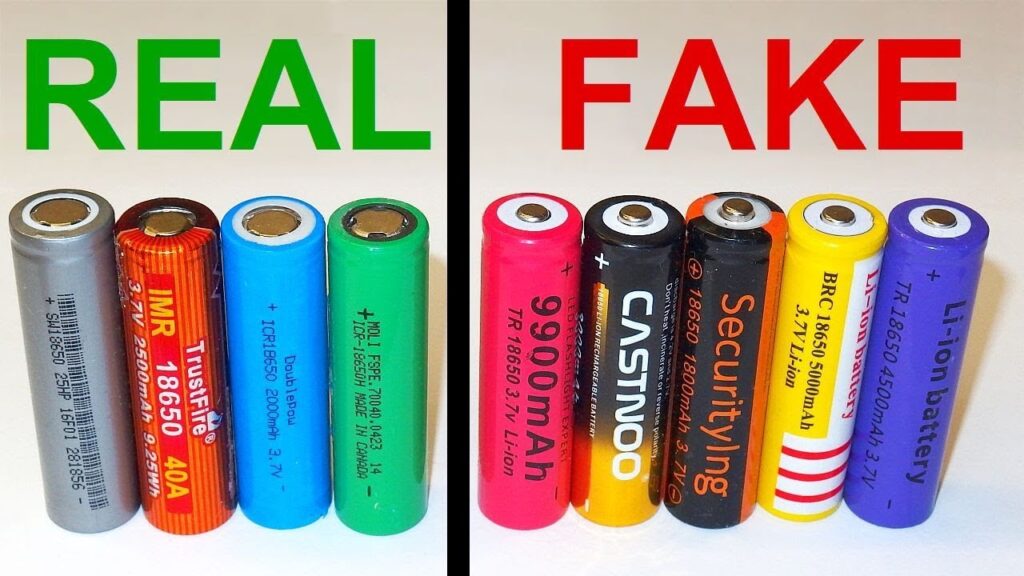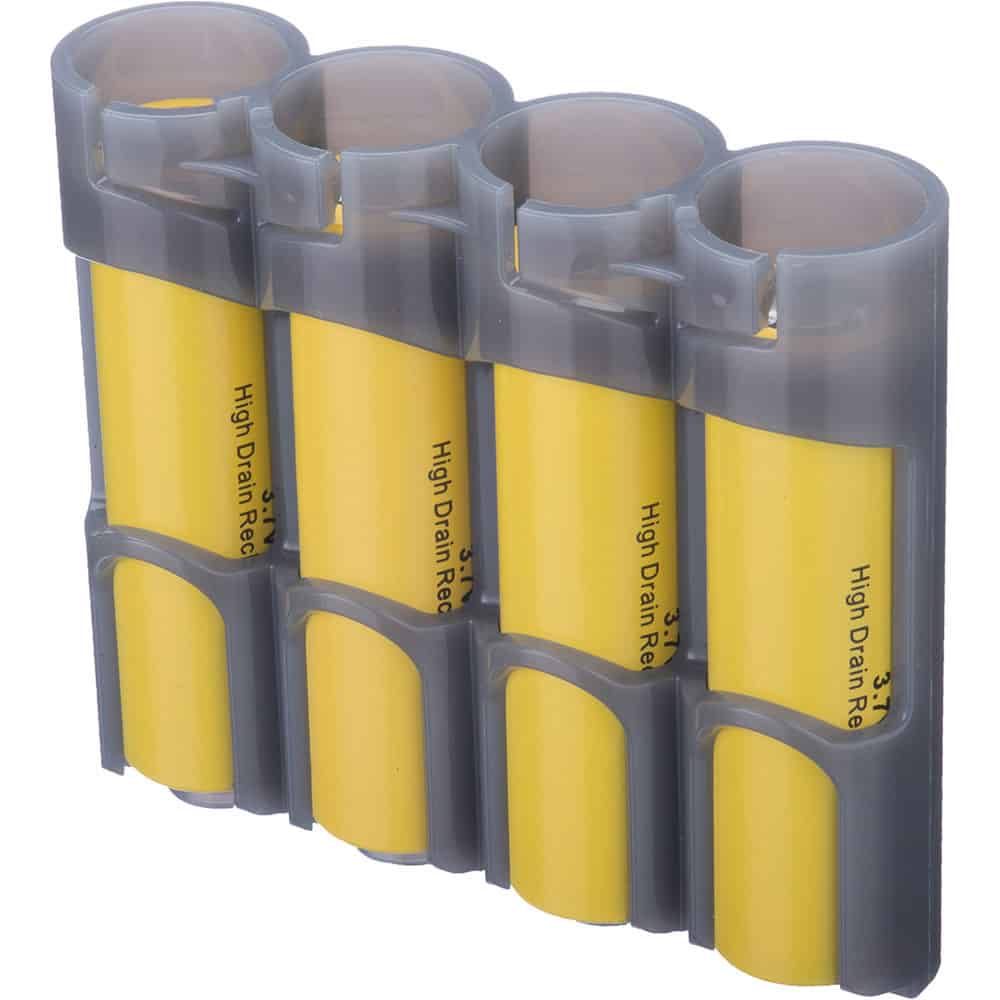The Top 10 Best 18650 Batteries
“We’ve compared the best 18650 batteries available at the most competitive prices.”

Best 18650 Battery Reviews
First of all, it is essential to note that 18650 batteries are widely used in many devices. They are used in flashlights and cameras, which have been highly helpful towards the development of society. However, I believe that there is no need to mention this here since other users have already discussed it on the Internet. Next, it is essential to note that these batteries are enormous.
They have a height of 18.6 mm and a diameter of 65 mm. However, it is also vital to consider the fact that many industries have been highly benefited due to these batteries. They are so large because of their incredible capacity. According to my calculations, they can store a total of 20700 mAh. This has been helpful towards the development of many industries since these batteries have high-energy-density.
- Rechargeable: Yes
- Voltage: 3.7V
- Charging Cut-off Voltage: 4.2V
- Discharge Cut-off Voltage: 3.0V
- Size: 18.0*65.0mm
- Rechargeable: Yes
- Voltage: 3.7V
- Charging Cut-off Voltage: 4.2V
- Discharge Cut-off Voltage: 3.0V
- Size: 18.0*65.0mm
- Rechargeable: Yes
- Voltage: 3.7V
- Charging Cut-off Voltage: 4.2V
- Discharge Cut-off Voltage: 3.0V
- Size: 18.0*65.0mm
- Rechargeable: Yes
- Voltage: 3.7V
- Charging Cut-off Voltage: 4.2V
- Discharge Cut-off Voltage: 3.0V
- Size: 18.0*65.0mm
- Rechargeable: Yes
- Voltage: 3.7V
- Charging Cut-off Voltage: 4.2V
- Discharge Cut-off Voltage: 3.0V
- Size: 18.0*65.0mm

How Do The Best 18650 Batteries Work?
Batteries are made of metal and other materials. They come in different shapes and sizes, designed for different uses. Some batteries can be used to power devices that produce electricity. Others can only store energy already made by a generator or other source. There are many different kinds of batteries.
Some use metal alone, others plastic and paper, still more using a combination of these materials. The most popular type of battery is rechargeable batteries. They are made of a variety of metals, plastic, and paper. Many of these batteries can be recycled. They are thrown away when they run out of energy, but many can still be recharged and used again.
The 18650 Batteries Made for Power.
The 18650 is a type of rechargeable lithium-ion battery. The name is an abbreviation for “18mm diameter, 650mAh capacity. It is a cylindrical battery, measuring 18mm (0.709 inches) in diameter and 65mm (2.56 inches) in length. Each cell has a nominal voltage of 3.7V, consisting of a metal lithium cobalt oxide.
The battery has a total energy of 10.6Wh (watt-hours), and an energy density of 150Wh/kg (watt-hours per kilogram). The lithium-ion battery is the most common type of rechargeable battery for portable electronics. Lithium-ion batteries are in everyday use since the early 1990s and have been commercially available since 1991.

How Long do 18650 Batteries Last?
18650 batteries are impressive. They’re a lithium-ion rechargeable battery commonly used in devices like laptops, power tools, and flashlights. They’re rated to supply a constant 2.5 Amps and have a maximum discharge rating of 20A, which is enough energy to light up 200 LED bulbs.
When used in a flashlight, they typically last between 50 and 80 hours. That’s around three days of continuous use. If you use a torch in bursts, it can last as long as 48 hours. That’s roughly two days of constant use. They’re made from very thin lithium and metal foil wrapped around a cylindrical graphite rod.
The end of the cylinder is then filled with an electrolyte gel that conducts electricity. The batteries are stacked in groups to provide the desired voltage. This can be as high as 4.2V, making them an excellent source of energy.
Where Are 18650 Batteries Mostly Made?
Batteries are a type of power source. They produce electric current through electrochemical reactions that take place between different kinds of matter. The most common form is lead(II) oxide, composed of two electrodes: a cathode and an anode. The cathode, made of a mixture of lead and other elements like nickel, is where reduction takes place. Removal involves inserting electrons into the matter. The anode’s function is oxidation; it extracts electrons from the material. Reduction and oxidation occur when electrons pass from one electrode to the other.
The battery provides power because of this exchange; it does not matter itself that powers a device or charges its batteries, but rather the movement of these free electrons. The cathode is composed of a mixture of elements. As it contains other substances, the cathode will have to be replaced periodically. When carbon is added to the cathode, it reduces its particles. In effect, this increases the number of electrons flowing into and out of the battery. This allows for an increase in electric current.

How Much Do The Best and the Worst 18650 Batteries Cost?
Batteries fundamentally are energy storage units. They contain chemicals that release electrons when a connection is made (i.e., when it’s connected to the circuit). This flow of electrons can be used for many different purposes, not just powering devices like lights or phones.
However, the key to storing energy is making sure it’s safely contained. This means that if a battery is damaged or punctured, then the chemicals will be unable to escape and burn up. Such stored chemical energy could even cause explosions in some cases.
- Rechargeable: Yes
- Voltage: 3.7V
- Charging Cut-off Voltage: 4.2V
- Discharge Cut-off Voltage: 3.0V
- Size: 18.0*65.0mm
- Rechargeable: Yes
- Voltage: 3.7V
- Charging Cut-off Voltage: 4.2V
- Discharge Cut-off Voltage: 3.0V
- Size: 18.0*65.0mm
- Rechargeable: Yes
- Voltage: 3.7V
- Charging Cut-off Voltage: 4.2V
- Discharge Cut-off Voltage: 3.0V
- Size: 18.0*65.0mm
- Rechargeable: Yes
- Voltage: 3.7V
- Charging Cut-off Voltage: 4.2V
- Discharge Cut-off Voltage: 3.0V
- Size: 18.0*65.0mm
- Rechargeable: Yes
- Voltage: 3.7V
- Charging Cut-off Voltage: 4.2V
- Discharge Cut-off Voltage: 3.0V
- Size: 18.0*65.0mm
Read 18650 Battery Reviews Before You Buy Them(to Avoid Problems!)
The problem is that safety mechanisms for batteries are not always 100% reliable. It’s also the case that different types of batteries have different levels of risk, and some can be stored safely in certain conditions but not others. So, the problem can happen when batteries are damaged in certain situations. If they’re punctured or exposed to water, then this could lead to a fire that could potentially burn down a house.
There are many different types of batteries, each with their safety mechanisms. A lot depends on storing them unacceptable conditions and putting a stop to battery damage when it happens. All in all, the best way to store batteries safely is by keeping them correctly and making sure they don’t get damaged or wet. A good battery safety check can help with this.